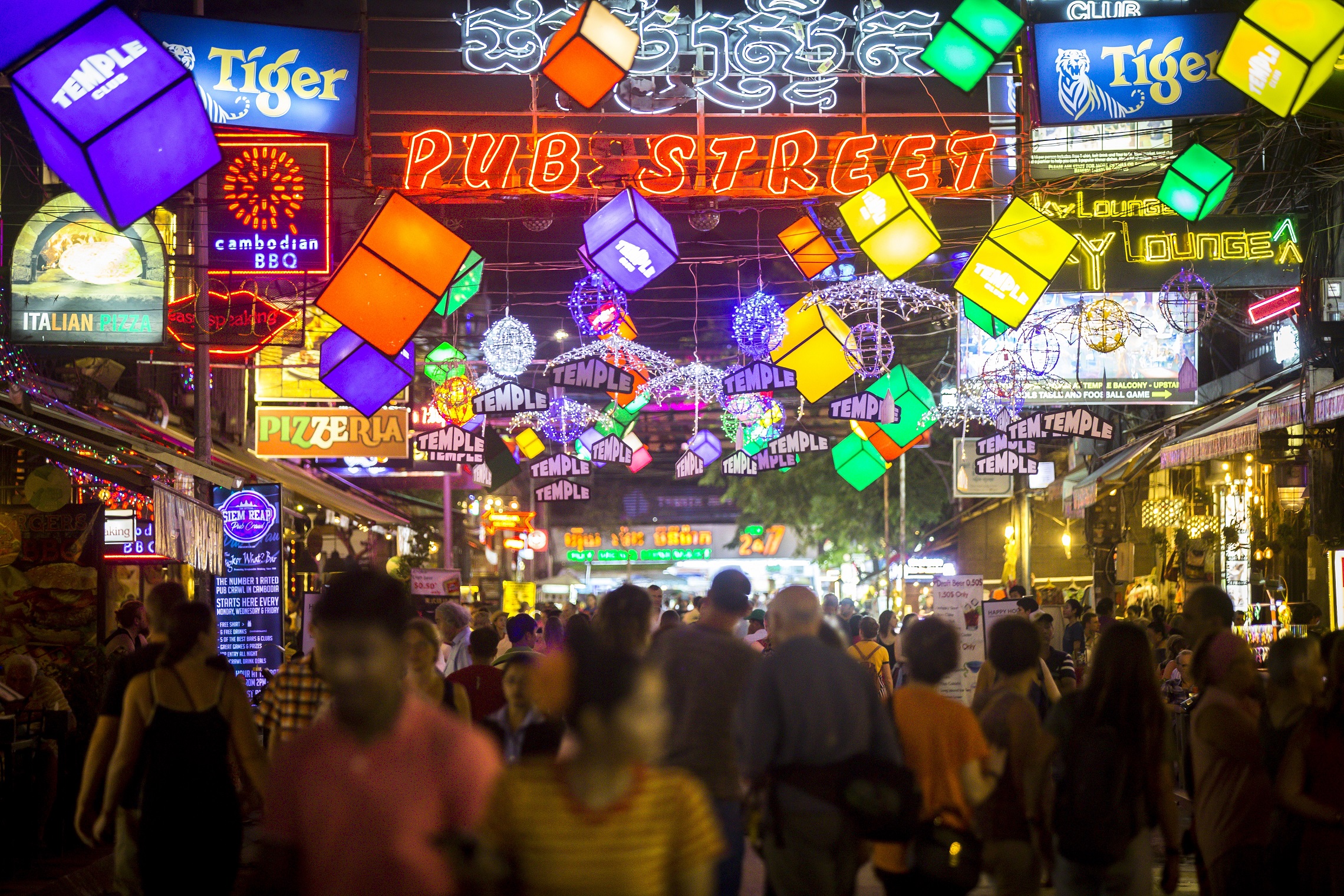Here are some of the major landmarks in Siem Reap provice, where one of our CELTA training centres is located. For information about the course arrangement and fees, please click
here. For information about accomodation, please click
here.
Angkor Wat is the ultimate expression of Khmer genius – a breathtaking temple that is spectacular for both its majestic scale and its incredible detail. The site is voted by Lonely Planet as one of the world’s number 1 place to visit, so it comes as no surprise that a visit to Cambodia’s World Heritage Temples is high on the list of many travelers to the region. Angkor Wat – built by Suryavarman II (r 1112–52) – is the earthly depiction of Mt Meru, the Mt Olympus of the Hindu faith and the home of ancient gods. The Cambodian god-kings of old each endeavored to better their ancestors’ structures in size, scale, and symmetry, culminating in what is understood to be the world’s largest religious structure. The temple is the heart and soul of Cambodia and a source of fierce national pride. Unlike the other Angkor shrines, it was never abandoned to the elements and has been in almost constant use since it was constructed. Phnom Kulen is a holy mountain for Cambodians, held in high esteem as the birthplace of the ancient Khmer Empire. In 802 King Jayavarman II declared independence from Java, according to an account of an inscription dating from the eleventh century found in Thailand. It is not clear, what is meant by "Java". The usual interpretation is that it is the island of the same name. But some historians argued, it could have been a name for the area of today's southern Laos (Lava) or even for Champa in today's central Vietnam. King Jayavarman II is reported to have united the Khmer principalities and to have declared himself "Chakravartin", an ancient Indian title for a universal ruler or emperor, Java's kings also used this imperial title. The coronation on Mahendraparvata (Phnom Kulen) is considered to be the founding act of the Khmer empire.
The Tonle Sap, also called "Great Lake", is the largest lake in Southeast Asia. It is located almost in the middle of Cambodia, and Siem Reap is only 15 km to the north. It is an ecological hotspot that was designated as a UNESCO biosphere in 1997. Altogether, there are 170 fishing villages on the Tonle Sap. The lake is famous for its wealth of fish, and it is the fourth-largest source of freshwater fish in the world. Fishermen can catch 300,000 tons of fish annually, which is 75% of Cambodia's freshwater fishing. Siem Reap is a perfect location to organize boat trips to villages and bird sanctuaries along the shores of the Great Lake, and Prek Toal is the most famous and a must see.
Things to do in Siem Reap
Shopping: As a tourist-friendly town, Siem Reap’s retail offerings mostly encompass Cambodian craftsmanship such as stone carvings, silverware, lacquer figurines, ceramics and silks. Meanwhile, trendy fashion boutiques, art galleries, and fair-trade centres are conveniently set within central Siem Reap, where you can shop for authentic and value-for-money handicrafts, jewellery, and apparel. Visitors can also experience the local lifestyle by visiting Siem Reap’s numerous outdoor markets in the early morning, where they can shop for fresh produce and enjoy authentic Cambodian delicacies such as lok-lak and amok.
Nightlife: Siem Reap's nightlife scene comprises lively bars, cocktail lounges, international restaurants and vibrant nightclubs that stay open (and busy) until 04:00 am every day. For backpackers, Pub Street in downtown Siem Reap is ideal for a night out of bar-hopping with like-minded travellers as its numerous bars are easily accessible on foot while unique cocktails and beers cost only US$1 (or less) during happy hour. There are also plenty of five-star hotels with rooftop bars, lounges and pubs serving imported wines and liquors as well as authentic Khmer and international fare - perfect for affluent travellers looking to relax after a day of exploring Angkor Wat.
Spas: The best spas in Siem Reap are must-visits after spending a full day at work or sightseeing. Boasting an extensive range of holistic facials, traditional massages, and nail and body treatments, these wellness centres are well-frequented by locals and tourists for their exceptional service, tranquil ambiance and professional therapists with years of experience. While you can enjoy a pampering session in the comfort of your hotel, standalone spas are equally impressive as most are set within downtown Siem Reap – perfect for a quick bit of relaxation before exploring the town’s many sights and sounds. From award-winning spas within luxurious resorts to affordable yet stylish independent establishments, Siem Reap has some of the best spas in the world.
Cultural Shows: Several restaurants and hotels in Siem Reap present Apsara Dance Shows, and Apsara Dance Dinner Shows are included in many tours. Most shows include the four genre of traditional Khmer dance: Apsara Dance, Masked Dance, Shadow Theatre, and Folk Dance. The Apsara Dance comes from the legend that Cambodia originated from the union of the hermit Kampu and the Apsara Mera. This dance shows Mera, dressed all in white, dancing in her garden. The dance shows happiness and prosperity for the whole country. She is joined by her maidens’ who present her with flowers which express a love of her from the people of Cambodia.
Learn more about CELTA course's fees and dates, please click here.
